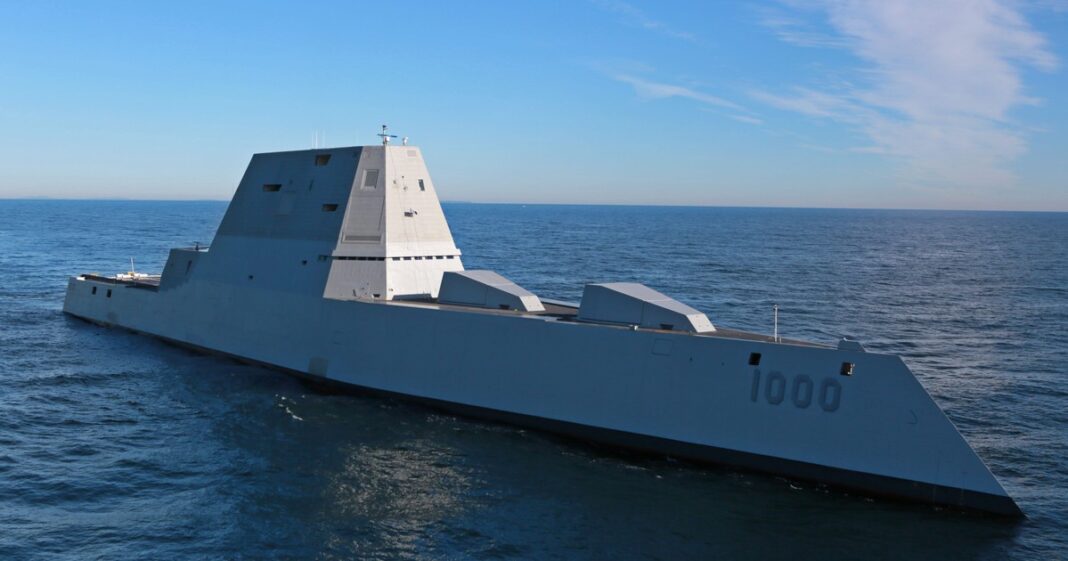The President’s Perspective on U.S. Naval Aesthetics
Aesthetic Concerns: A Long-Standing Critique
The president has a unique history of voicing concerns about the appearance of American warships. He has openly compared them to rival navies and criticized various aspects of their designs and technology. Notably, he has even brought up issues like rust with senior military officials. Such observations highlight his broader views not just on military effectiveness, but on how naval vessels project power and prestige.
Recent Comments at Marine Corps Base Quantico
During a summit of military leaders held at Marine Corps Base Quantico in Virginia, the president made headlines by stating he is “not a fan” of certain Navy ships. This comment reignited discussions about the aesthetic qualities of military vessels and their broader implications for U.S. naval strategy.
The Stealth vs. Aesthetics Debate
The president’s remarks became more pointed when he questioned the idea of stealth technology in ship design. He remarked, “They say, ‘Oh, it’s stealth.’ I said, ‘That’s not stealth.’ An ugly ship is not necessary in order to say you’re stealth.” This assertion reveals his belief that a visually appealing design should accompany technological advancements, showcasing a blend of form and function.
Specific Vessels in Question
While the president did not specify which vessels he was criticizing, the U.S. Navy does possess stealth warships like the Zumwalt-class destroyers. These ships are designed with a unique tumblehome hull that minimizes radar visibility, aimed at evading enemy detection. Trump’s criticisms, however, underscore a disconnect between technological innovation and public perception.
Historical Context of Critiques
The aesthetic evaluations are not a new phenomenon. Mark Esper, former Secretary of Defense, documented similar complaints in his memoir, revealing that the president had previously deemed Navy ships “ugly” when juxtaposed with more visually appealing designs from Russia and Italy. Esper noted Trump’s preference for sleek, attractive vessels.
Function Versus Form
In their discussions, Esper informed the president that U.S. warships are built primarily for combat, not beauty contests, emphasizing the prioritization of functionality over aesthetics. Nevertheless, this assertion appeared to have little impact on Trump’s opinions as he continued to push for more visually appealing designs.
Aesthetic Influence on Warship Design
Toward the end of his first term, the president humorously claimed credit for influencing the design of the Navy’s new frigate. He remarked that he advocated for making the ship look beautiful while still costing the same, illustrating his belief that better design does not necessarily equate to higher expenses.
Critiques of the USS Gerald R. Ford
During his tenure, Trump frequently expressed dissatisfaction with the USS Gerald R. Ford, the first of its class. According to Esper, Trump characterized the carrier as “overpriced” and “broken,” focusing on its technological components like the electromagnetic catapults and elevators for aircraft. His concerns extended to the carrier’s visual elements, particularly the command center’s placement, which he suggested could be improved for better aesthetics.
Persistent Focus on Image
Trump’s fixation with aesthetics remains a constant theme. Esper noted that the president’s primary considerations often revolved around “the look,” emphasizing that visual appeal was a recurring point of interest throughout both of his terms in office.
Ongoing Concerns in the Second Term
In February 2025, weeks into his second term, the president once again criticized the Ford-class carriers for their cost overruns and technical problems. While some of his concerns shifted toward functionality, his attention to appearance did not entirely fade. His Navy secretary relayed instances of the president reaching out late at night to discuss the condition of Navy vessels, with concerns regarding rust and overall maintenance.
The Bigger Picture: U.S. Naval Strategy
At the military summit, the president advocated for increasing the budget for naval ship construction, expressing a belief that the United States “basically doesn’t build ships anymore.” His comments reflect a recognition of the need for modernization within the fleet but also illustrate his continued emphasis on aesthetics, merging concerns over capability and visual dominance in naval strategy.
This dynamic interplay of form, function, and aesthetics illustrates a fascinating dimension of military leadership where the visual impact of naval power is viewed as much as a matter of national pride as it is of military effectiveness.



